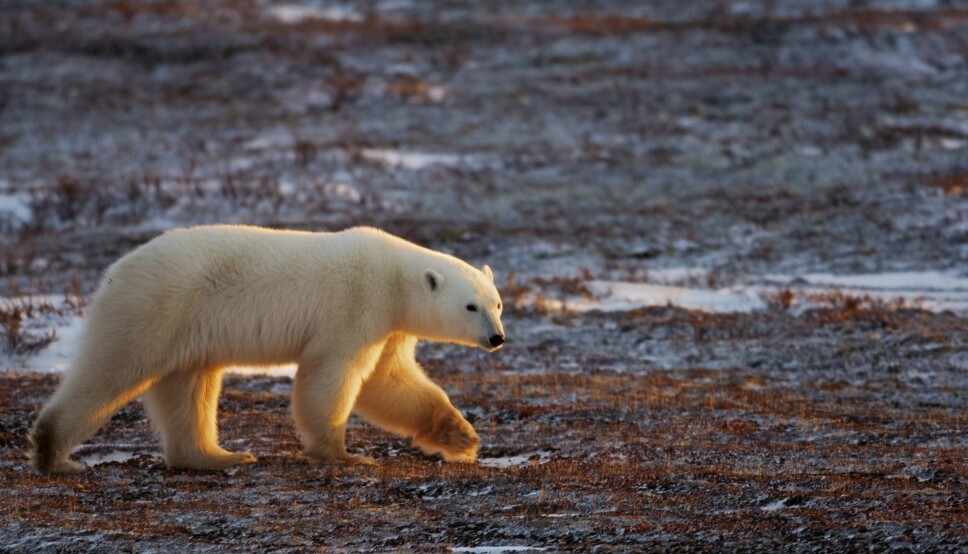This article is produced and financed by the Norwegian Scientific Committee for Food and Environment - Read more

International trade in polar bears from Canada could threaten the species´ survivability
This is the conclusion of a risk assessment made by the Norwegian Scientific Committee for Food and Environment (VKM) commissioned by the Norwegian Environmental Agency.
"International trade is not the biggest threat to polar bears, but the market is substantial, and it is uncertain whether harvesting is done in a sustainable way," says Eli Knispel Rueness
She is the academic leader for the risk assessment, which among other things applies to sub-populations inhabiting areas where hunting is in progress.
A Canadian export
Canada is the only country in the world that allows commercial export of polar bear products. Norway is one of the importing countries.
The trade is mainly in polar bear fur, but also other fur-related products, skulls and teeth.
The International Convention on International Trade in Endangered Species of Wild Fauna and Flora, CITES, has polar bears on its list of species that are vulnerable to trade or that could be threatened with extinction if trade is not regulated.
Analysis of CITES trade data shows that the international market for trade in polar bear products is changing, both in terms of destinations for import and the kinds of products dominating the market. Today, China is the main importer.
The risk assessment will be used to assess whether trade is a threat to the polar bear population, and whether there is a basis for moving polar bears to the strictest list of endangered species in the Norwegian CITES regulations.
Counting polar bears
There are 19 sub-populations of polar bears globally. Nine of them are found only in Canada, and four are shared between Canada and other countries. The Canadian population constitutes two-thirds of the world's polar bear population.
Scientific knowledge about polar bears in Canada indicates that four sub-populations are in decline, two are stable, one is increasing, and the status for the remaining six is unknown.
Rueness points out that there is considerable uncertainty in all calculations of population sizes.
“One reason for this is that the method for calculating population sizes has changed. Therefore, the results from different surveys are not comparable. Another reason is that population measurements in some areas are conducted so infrequently that it is impossible to detect rapid decline,” explains Rueness.
A vulnerable species
VKM has examined the available scientific knowledge about the biology and evolution of the Canadian polar bear populations.
As polar bears are totally dependent on the ecosystem of the Arctic sea ice, VKM has looked at various scenarios for climate change in this vulnerable environment.
Rueness points out that the polar bear will lose much of its habitat in the coming years, as predicted by forecasts for the Arctic marine ecosystem.
“This will inevitably lead to a further decline in the population,” she says.
The assessment also describes challenges for survival, such as loss of habitats and increased human activity. VKM has evaluated the quality of the data that forms the knowledge base for population size estimates, and uncertainty related to projections of future population sizes.
The risk assessment is approved by the Scientific Panel for Alien Organisms and trade in Endangered Species (CITES).
Reference:
A CITES risk assessment for polar bear (Ursus maritimus). En rapport fra Vitenskapskomiteen for mat og miljø, 2020.







